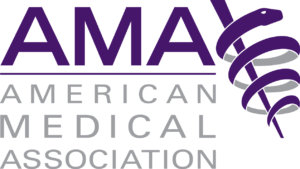The American Medical Association is calling for a ban on prescription drug advertising aimed at consumers. The AP reports that the group voted Tuesday to adopt a position that is expected to lead to lobbying for a ban on the ads.
The AMA says ads for prescription drugs and implantable medical devices contribute to higher costs and fuel demands by patients for inappropriate treatment, the story reports.
“According to data cited in an AMA news release, ad dollars spent by drugmakers have risen to $4.5 billion in the last two years, a 30 percent increase,” the story reports. “Other data show prices on prescription drugs have climbed nearly 5 percent this year.”
In the release, AMA board member Dr. Patrice Harris said: “Today’s vote in support of an advertising ban reflects concerns among physicians about the negative impact of commercially driven promotions and the role that marketing costs play in fueling escalating drug prices. … Patient care can be compromised and delayed when prescription drugs are unaffordable and subject to coverage limitations by the patients’ health plan.”
The pharmaceutical industry has a different take, and is opposing the AMA position. Tina Stow of the trade group Pharmaceutical Research and Manufacturers of America is quoted in the story saying the goal of direct-to-consumer advertising is to provide “scientifically accurate information to patients so that they are better informed about their health care and treatment options.”


Side effects from banning the drug ads on TV include, loss of ad revenue for the nightly news programs, reduced budgets for the news departments, reduced salaries for ad sales people, heart disease caused by anxiety reactions to diminished income, flatulence, and feelings of impotence. If you have any of these symptoms you should contact your AMA doctor and thank him for not having to watch that crap on TV any more.
6 years ago PHARMA (Pharmaceutical Research and Manufacturers of America) banned promotional advertising items. These useful pens, coffee mugs, note pads and other branded items were the sacrificial lamb used to take focus away from the real issue driving up the cost of drugs. At the time the total invested in these promotional and educational items reached about $500MM. At the same time direct to consumer advertising was close to $4 BILLION!!! The direct or consumer advertising was driving up the cost of drugs almost on a daily basis. But the high visibility of promotional items and that it was easy to make fun about some promotions offered PHARMA the perfect public propaganda pretending that they wanted to keep drug costs low. Those that tried to make this public aware were prevented by the news outlets who had a vested interest in seeing direct to consumer advertising continue. If the drug industry behaved as most other industries do and lowered their prices as their advertising brought them a larger market share, there would be little complaint. But the drug industry does just the opposite and raises prices as popularity increases. And – to pay for all the direct to consumer advertising in the US, drug companies charge more here that in other countries for the exact same products!
Personally, if I never have to see a 90 second drug ad again, I sure won’t mind a bit. Some of the side effects in the disclaimers sound like they’d be worse than the illness. Advertising prescription drugs to the public seems to me to be about the same as advertising liquor to 18 year olds in a state where the drinking age is 21. You can’t write yourself a prescription, and they can’t buy the booze. Turnover in advertising happens anyway, so the lost revenue from the loss of these ads will be made up elsewhere.
Can’t come soon enough, no wonder drug prices are so high. It’s a constant barrage 24/7, bad enough when it was just the boner commercials.